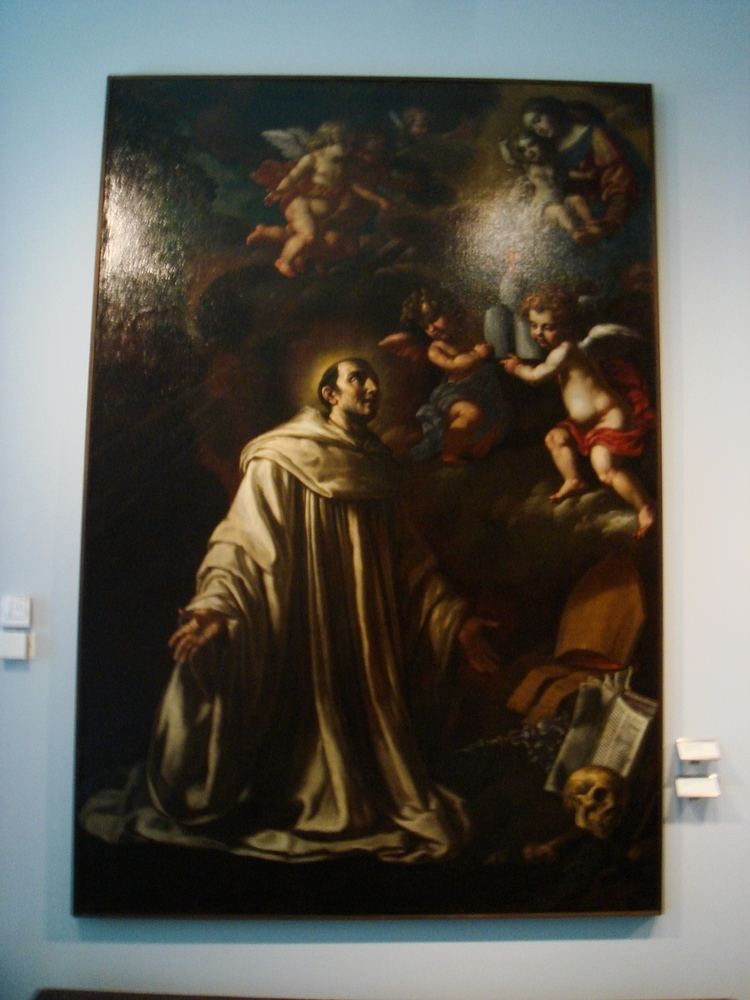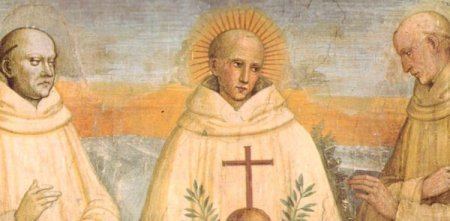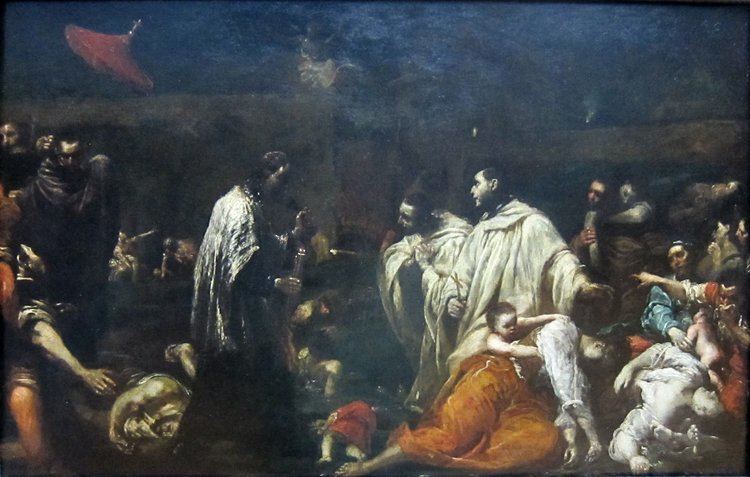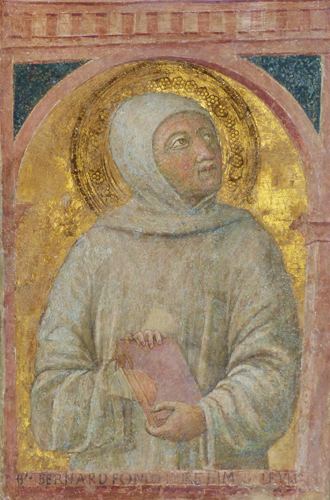Venerated in Roman Catholicism Name Bernardo Tolomei | ||
 | ||
Beatified 1634 by Pope Urban VIII Feast August 19 (Order of St. Benedict) Similar People Ambrogio Lorenzetti, Agostino Novello, Pope Alexander VII, Pope John I, Pope Alexander III | ||
San bernardo tolomei prima parte
Saint Bernardo Tolomei (10 May 1272 – 20 August 1348) was an Italian Roman Catholic theologian and the founder of the Congregation of the Blessed Virgin of Monte Oliveto. In the Roman Martyrology he is commemorated on August 20, but in the Benedictine calendar his optional memorial is celebrated on the previous day.
Contents
- San bernardo tolomei prima parte
- Monachesimo abate bernardo tolomei monte oliveto maggiore asciano si
- Life
- References

Bernardo Tolomei was beatified by Pope Innocent X on 24 November 1644 and was canonized by Pope Benedict XVI on 26 April 2009.

Monachesimo abate bernardo tolomei monte oliveto maggiore asciano si
Life

Giovanni Tolomei was born at Siena in Tuscany on the May 10, 1272. He was educated by his uncle, Christopher Tolomeo, a Dominican, and desired to enter the religious life, but his father's opposition prevented him from doing so, and he continued his studies in secular surroundings. After a course in philosophy and mathematics he devoted himself to the study of civil and canon law, and of theology. For a time Bernardo served as a knight in the armies of Rudolph I of Germany. While studying law in Siena, he joined the Confraternity of the Disciplinati di Santa Maria della Notte dedicated to aiding the sick at the Hospital della Scala. Tolomei became a professor of law at the University of Siena.

In 1313, Giovanni, together with two companions, Patrizio di Francesco Patrizi and Ambrogio di Nino Piccolomini, noble Sienese merchants and members of the same Confraternity, retired to Accona on a property belonging to his family. He had taken the name of "Bernard" (in its Italian form Bernardo) out of admiration for the Abbot of Clairvaux. Here they lived a hermitic penitential life characterised by prayer, manual work and silence.
Towards the end of 1318, or the beginning of 1319, while deep in prayer, he is said to have seen a ladder on which monks in white habits ascended, helped by angels, and awaited by Jesus and Mary.
Upon his return he founded the congregation of the Blessed Virgin of Monte Oliveto (the Olivetans), giving it the Rule of St. Benedict. The purpose of the new religious institute was a special devotion to the Blessed Virgin. Guido, Bishop of Arezzo, within whose diocese the congregation was formed, confirmed its constitution in (1319), and many favours were granted by Popes John XXII, Clement VI (1344), and Gregory XI. Since the Benedictine rule did not prescribe the colour of monastic dress, the Olivetans wore white habits.
During the Plague of 1348 Bernardo left the solitude of Monte Oliveto for the monastery of San Benedetto a Porta Tufi in Siena. The disease was particularly virulent in the city. Bernardo and his monks devoted themselves to the care of the sick. On the 20th August 1348, while helping his plague-stricken monks, he himself, fell victim of the Plague. Eighty-two monks likewise succombed to the plague.
His last days were depicted in a painting by the 18th-century Italian painter Giuseppe Maria Crespi. His work was entitled: 'The Blessed Bernard Tolomei Interceding for the Cessation of the Plague in Siena' (1735).
After having ruled the religious body he had founded for 27 years Bernardo died, at the age of 76. In 1634 he was beatified by the Congregation of Rites, but was often referred to as "Saint Bernardo" even before his canonization in 2009.
